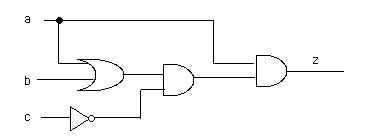
CSCI 150, Spring 2003
Home | | Course Schedule | | Assignments | | Lecture NotesThe following topics have been covered in the second part of the course. Each of the following topics may appear on the exam. In addition there may be questions on any of the topics from the first part of the course.
1. Subprograms Divide and conquer programming Procedures Writing Procedure definitions Calling a procedure Execution of a procedure Formal and actual parameters Pass-by-Reference and Pass-by-Value parameters functions writing function definitions Returning a value from a function 2. Recursion Definition of recursion Writing a recursive function (one that calls itself) Classic examples of recursion: Fibonacci, Factorial 3. Church-Markov-Turing Hypothesis 4. Simulation Purpose of simulations (what are they good for?) observing system behavior under different conditions designing systems that behave optimally increasing understanding of a system Altering code to find best solution to a problem (e.g. race car code) 5. Binary representation Counting in base 2 Converting from decimal to base 2 (and back) Hexadecimal representation (base 16) Integer representation--Signed magnitude, One's complement, Two's complement Binary arithmetic Floating point representation 6. Digital Circuits Components: Logic switches, AND, OR, NOT, NAND, NOR and XOR Writing Truth tables for circuit outputs Writing logical expressions to describe circuit outputs Designing a circuit to compute a logical expression
Practice Problems
The following problems are intended to help you study for the exam. Solutions to these problems
will be posted on the CSCI 150 website at the end of the weekend. You should try to solve the
problems before looking at the solutions!
1) Given the function definition: function Mystery( someVal: real): real; begin if someVal > 2.0 then begin Mystery := 3.0 * someVal; end else begin Mystery := 0.0; end; end; What is the value is assigned to x after execution of the following statement? x := Mystery(2.5); 2) Consider the procedure definition: procedure Demo( var number: integer; answer: real); begin number := number*2; answer := number + 3.5; end; Suppose the caller has variables myNum and myResult whose values are 20 and 4.8 respectively. What are the values of myNum and myResult after return from the following procedure call? Demo(myNum, myResult); 3) a)Write a function, function TenToThePower( n : integer) : integer; that returns 10 raised to the integer power specified by n. b) Write a Pascal statement to compute 10 to the power of 3 and store the answer in the variable, tenCubed. 4) Convert the following numbers to binary representation: 237 45 63 5) Convert the above numbers to hexadecimal representation 6) For each of the following numbers, show their representations in each of: signed magnitude, 1's complement and 2's complement: 22 -31 -22 49 7) Using eight bit numbers, add the following two binary numbers: 01110001 00011100 Show your work. Convert the result to decimal. 8) Draw a circuit that computes the following truth table for inputs a and b and output c:
| a | b | c |
| 0 | 0 | 0 |
| 0 | 1 | 1 |
| 1 | 0 | 1 |
| 1 | 1 | 0 |
9) Write an expression for the output of the following circuit. Draw a truth table that shows the output for each combination of inputs:
